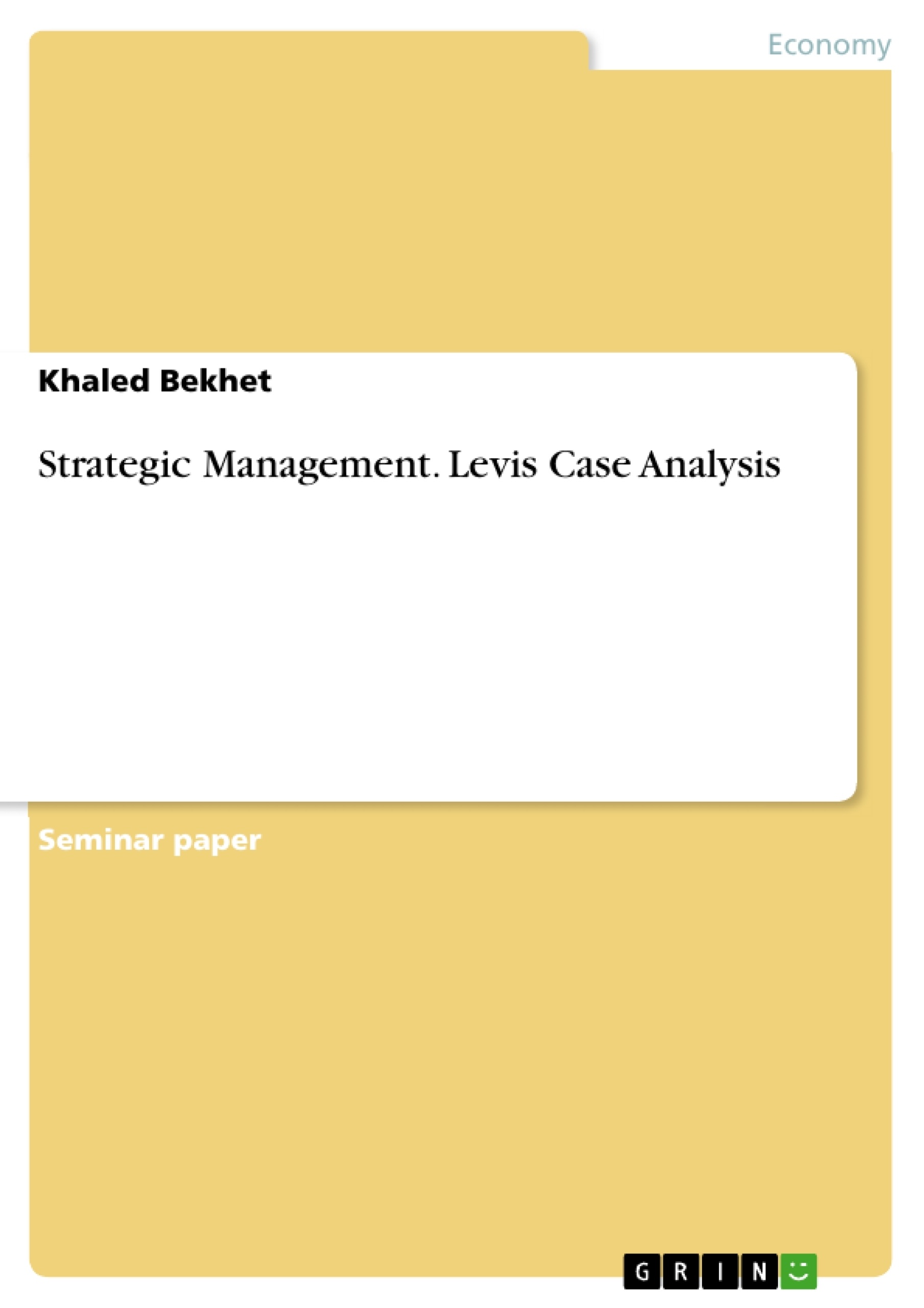In 1995, women’s jeans were a $2 billion fashion category in the US and growing fast. Levi- Strauss was the market leader, but its traditional dominant position was under heavy attack. Standard Levi’s women’s jeans, sold in 51 size combinations (waist and inseam), had been the industry leading product for decades, but "fashion" was now taking over the category. Market research showed that only 24 percent of women were "fully satisfied" with their purchase of standard jeans at about $50 per pair. "Fashion" in jeans meant more styles, more colors, and better fit. All of these combined to create a level of product line complexity that was a nightmare for manufacturing-oriented, "push based" companies like Strauss. By 1995, Strauss operated 19 Original Levi’s retail stores across the country (2,000 to 3,000 square foot mall stores) to put them in closer touch with the ultimate customers. However, this channel was a very small part of their overall $6 Billion sales, which were still primarily to distributors and/or independent retailers.
Shows Levi’s financial footprint. Strauss was as aggressive as most apparel manufacturers and retailers in investing in process improvements and information technology to improve manufacturing and delivery cycle times and "pull-based" responsiveness to actual buying patterns. However, the overall supply chain from product design to retail sales was still complex, expensive and slow. In spite of substantial improvements in recent years, (including extensive use of "EDI", there was still an eight-month lag, on average, between ordering cotton fabric and selling the final pair of jeans. The industry average lag was still well over twelve months in 1995. The financial footprint for one pair of women’s jeans sold through the normal wholesale channel compared to one pair sold through an Original Levi’s Store summarized in.
Table of Contents
- Executive's summary
- Introduction
- The Vision
- The Values
- The Mission
- The Products
- Customers
- Current Strategy
- SWOT analysis
- Strengths
- Weakness
- Opportunities
- Threats
- Internal Factors Evaluation (IFE)
- Value Chain Analysis of Levi Strauss
- Primary Activities
- Inbound Logistics
- Operations
- Outbound Logistics
- Marketing and Sales
- Services
- Secondary Activities
- Firm infrastructure
- Human resource management
- Technology development
- Procurement
- VRIO Analysis
- Value
- Rarity
- Imitability
- Organization
- EXTERNAL ENVIRONMENT ANALYSIS
- Political
- Social
- Technological
- Environmental
- Legal
- Health and safety laws
- External Factors Evaluation Matrix (EFE)
- Porters five view
- The threat of new entrants: HIGH
- Threat of substitution: HIGH
- The bargaining power of customers: HIGH
- The bargaining power of suppliers: MEDIUM
- Industry rivalry: HIGH
- Competitive Profile Matrix (CPM)
- SWOT Matrix
- The Strategic Position and Action Evaluation (SPACE) Matrix
- BCG Matrix
- Internal External Matrix
- Grand Strategy Matrix
- Quantitative Strategic Planning Matrix (QSPM)
- QSPM suggests that product development has a stronger potential than market development by
- Financial Analysis
- Recommendation and implementation
- References
Objectives and Key Themes
This report presents a comprehensive strategic audit of Levi Strauss, analyzing the company's current position within the women's jeans market. It examines key internal and external factors affecting Levi Strauss's performance and explores opportunities for future strategic development. The analysis aims to understand the company's competitive landscape, assess its strengths and weaknesses, and identify potential threats and opportunities.
- Analyzing Levi Strauss's position in the competitive market landscape
- Evaluating the company's internal strengths and weaknesses
- Assessing the impact of external factors on Levi Strauss's success
- Identifying potential strategic opportunities and threats
- Developing recommendations for future strategic direction
Chapter Summaries
The report begins with an executive summary outlining the competitive landscape of the women's jeans market in 1995, highlighting Levi Strauss's dominant position, but facing increasing pressure from "fashion" trends. The analysis delves into Levi Strauss's vision, values, mission, products, customer base, and current strategy.
The report then conducts a SWOT analysis, identifying Levi Strauss's strengths, weaknesses, opportunities, and threats. This is followed by an Internal Factors Evaluation (IFE) and a detailed Value Chain Analysis that breaks down the company's primary and secondary activities, examining elements such as inbound logistics, operations, outbound logistics, marketing and sales, and services.
Further, the report explores the company's competitive advantages using a VRIO analysis, assessing the value, rarity, imitability, and organization of Levi Strauss's resources. The report continues with an external environment analysis examining political, social, technological, environmental, legal, and health and safety factors impacting Levi Strauss's operations.
The report then utilizes a range of strategic analysis tools, including an External Factors Evaluation Matrix (EFE), Porter's Five Forces, a Competitive Profile Matrix (CPM), and a SWOT Matrix. These tools provide valuable insights into the competitive landscape and help identify potential strategic options.
Finally, the report presents the Strategic Position and Action Evaluation (SPACE) Matrix, BCG Matrix, Internal External Matrix, and Grand Strategy Matrix to provide a comprehensive strategic framework for Levi Strauss.
Keywords
Key terms and concepts explored in this report include SWOT analysis, Value Chain Analysis, VRIO framework, External Factors Evaluation Matrix (EFE), Porter's Five Forces, Competitive Profile Matrix (CPM), Strategic Position and Action Evaluation (SPACE) Matrix, BCG Matrix, Internal External Matrix, and Grand Strategy Matrix.
- Quote paper
- Dr. Khaled Bekhet (Author), 2019, Strategic Management. Levis Case Analysis, Munich, GRIN Verlag, https://www.grin.com/document/918261




